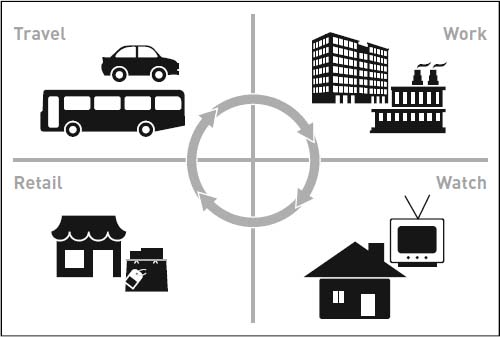CHAPTER 4 Life in boxes: the industrial formula for living
The post–World War II era in Westernised, developed and relatively democratic countries was a cosy existence, as cosy as any time in the history of humanity. Standards of living increased constantly, year upon year. Despite a few shocks and interruptions along the way, we had steady employment growth, increasing incomes and all the trappings that go with classic suburban living. It seemed as though this type of existence could be the answer people had been looking for. A decent-sized house with space around it. Close access to our place of employment. Government-funded schools nearby. Shopping malls filled with shiny gadgets we didn’t know we needed. A quarter-acre block with a driveway. A lush, green, grassed backyard in which to play with growing families. Actually, it sounds pretty damn good. I still think it’s an incredibly deluxe way of living, especially compared to the nondustrial alternative. It was predictable and packaged. I like to call it ‘life in boxes’ and it looks something like figure 4.1.

Figure 4.1 life in boxes
Here’s how an average week would go for suburban dwellers between 1950 and 1995: wake up; get ready for work; hop into your transport box — a bus, a train, but more likely a car — and sit in that box for up to an hour. In that box, we’d listen to songs on the radio chosen by someone else ...
Get The Great Fragmentation: And Why the Future of All Business is Small now with the O’Reilly learning platform.
O’Reilly members experience books, live events, courses curated by job role, and more from O’Reilly and nearly 200 top publishers.

